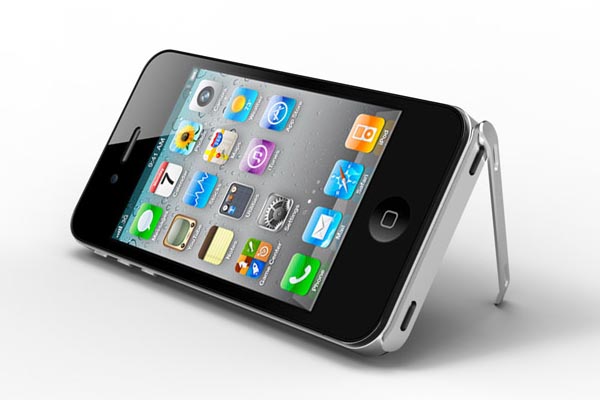New Data: The Correlations Between Social Sharing and Inbound Links
Posted by danzarrella
Over the past few years, the topics I’ve researched, written, and spoken about have evolved. One of the most common questions I’m still asked about is the relationship between social media sharing and SEO performance. Thanks to Rand and his awesome team at SEOMoz, I got access to their Mozscape API and was able to actually start to answer these questions in a scientific way.
To complete this analysis, I compiled a database of more than 25,000 URLs that had been shared at least once on the three major social networks (Facebook, Twitter and LIinkedIn), were at least a month old, and had at least one incoming link.
First, I looked at the relationship between the number of times a URL was Tweeted and the number of incoming links it had pointing to it. I found a convincing positive relationship. Those URLs that got more Twitter love, also got more link love.

Secondly, I looked at Facebook and found, somewhat unsurprisingly, almost exactly the same effect. Facebook popularity is related to inbound link popularity for URLs.

Finally, I looked at LinkedIn sharing. Of course the numbers are much smaller here due to sharing activity being much more common on Twitter and Facebook, but I still found another positive relationship.

For all of the “big three” social media networks, I found that social sharing had a positive relationship to incoming links pointing to a URL. This result is basically what I expected to see. However, when I took a step back and compared the actual Pearson’s Correlation Coefficient of the sharing on the three networks to inbound links, what I found was surprising.

While all three networks did have a positive correlation, the strength of the relationship was strongest for LinkedIn. So, while LinkedIn may be the least obvious choice for sharing activity, it is still incredibly important for marketers also interested in SEO performance.
Looking for more insights into online marketing? Don't miss the free webinar on August 20th with Rand from SEOmoz and Dharmesh from Hubspot: The State of SEO and Internet Marketing in 2012.
Sign up for The Moz Top 10, a semimonthly mailer updating you on the top ten hottest pieces of SEO news, tips, and rad links uncovered by the Moz team. Think of it as your exclusive digest of stuff you don't have time to hunt down but want to read!
rtechinsane,icodesource,SEO,SEO Tips,SEO Backlinks,SEO content,SEO tricks,SEO Engine,codes,gadgets,iphones,ipad,4G phones,geeks,reviews,database,DBMS,
warehouse,datamining,datawarehouse
Over the past few years, the topics I’ve researched, written, and spoken about have evolved. One of the most common questions I’m still asked about is the relationship between social media sharing and SEO performance. Thanks to Rand and his awesome team at SEOMoz, I got access to their Mozscape API and was able to actually start to answer these questions in a scientific way.
To complete this analysis, I compiled a database of more than 25,000 URLs that had been shared at least once on the three major social networks (Facebook, Twitter and LIinkedIn), were at least a month old, and had at least one incoming link.
First, I looked at the relationship between the number of times a URL was Tweeted and the number of incoming links it had pointing to it. I found a convincing positive relationship. Those URLs that got more Twitter love, also got more link love.

Secondly, I looked at Facebook and found, somewhat unsurprisingly, almost exactly the same effect. Facebook popularity is related to inbound link popularity for URLs.

Finally, I looked at LinkedIn sharing. Of course the numbers are much smaller here due to sharing activity being much more common on Twitter and Facebook, but I still found another positive relationship.

For all of the “big three” social media networks, I found that social sharing had a positive relationship to incoming links pointing to a URL. This result is basically what I expected to see. However, when I took a step back and compared the actual Pearson’s Correlation Coefficient of the sharing on the three networks to inbound links, what I found was surprising.

While all three networks did have a positive correlation, the strength of the relationship was strongest for LinkedIn. So, while LinkedIn may be the least obvious choice for sharing activity, it is still incredibly important for marketers also interested in SEO performance.
Looking for more insights into online marketing? Don't miss the free webinar on August 20th with Rand from SEOmoz and Dharmesh from Hubspot: The State of SEO and Internet Marketing in 2012.
Sign up for The Moz Top 10, a semimonthly mailer updating you on the top ten hottest pieces of SEO news, tips, and rad links uncovered by the Moz team. Think of it as your exclusive digest of stuff you don't have time to hunt down but want to read!
rtechinsane,icodesource,SEO,SEO Tips,SEO Backlinks,SEO content,SEO tricks,SEO Engine,codes,gadgets,iphones,ipad,4G phones,geeks,reviews,database,DBMS,
warehouse,datamining,datawarehouse



















































